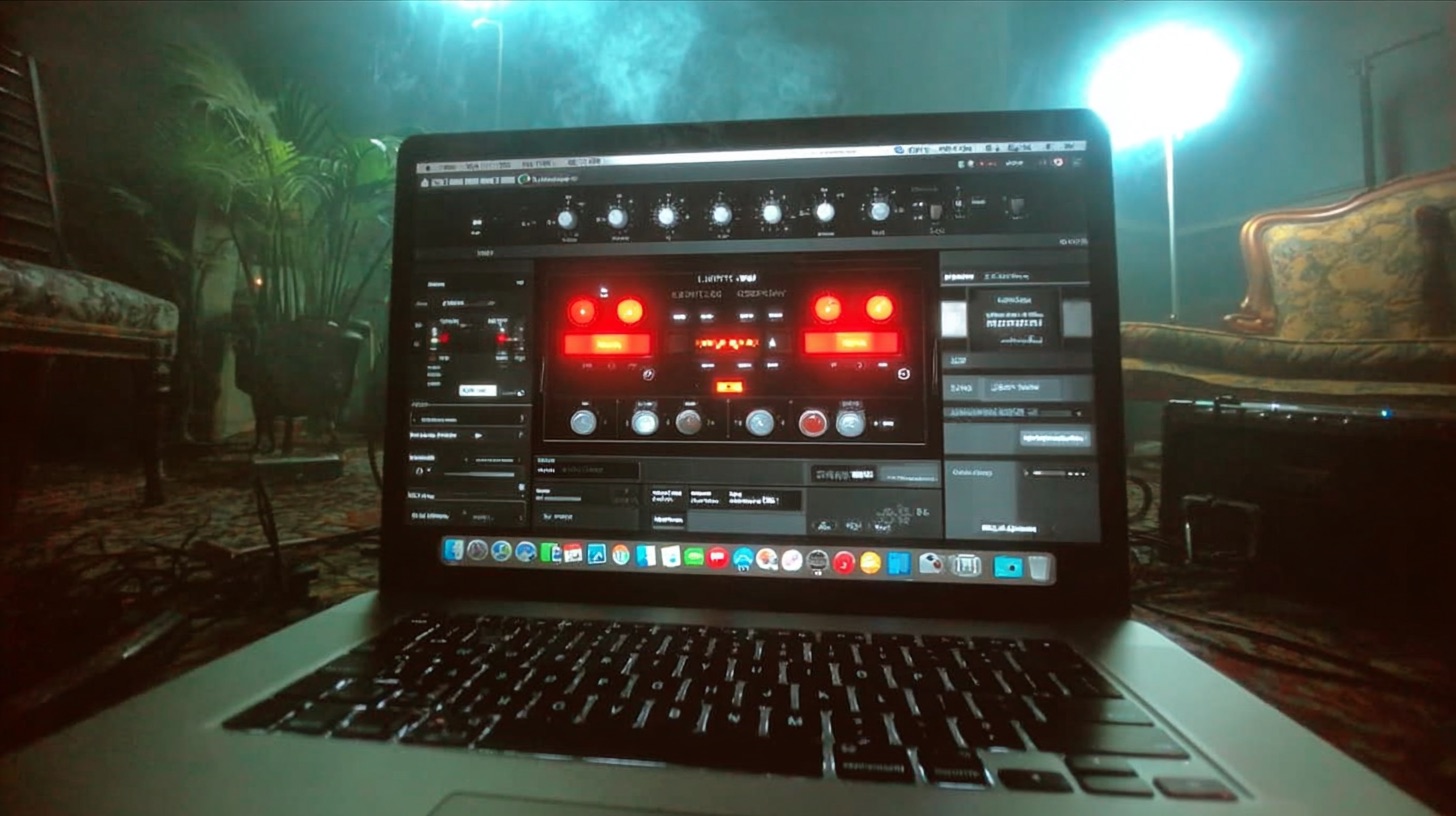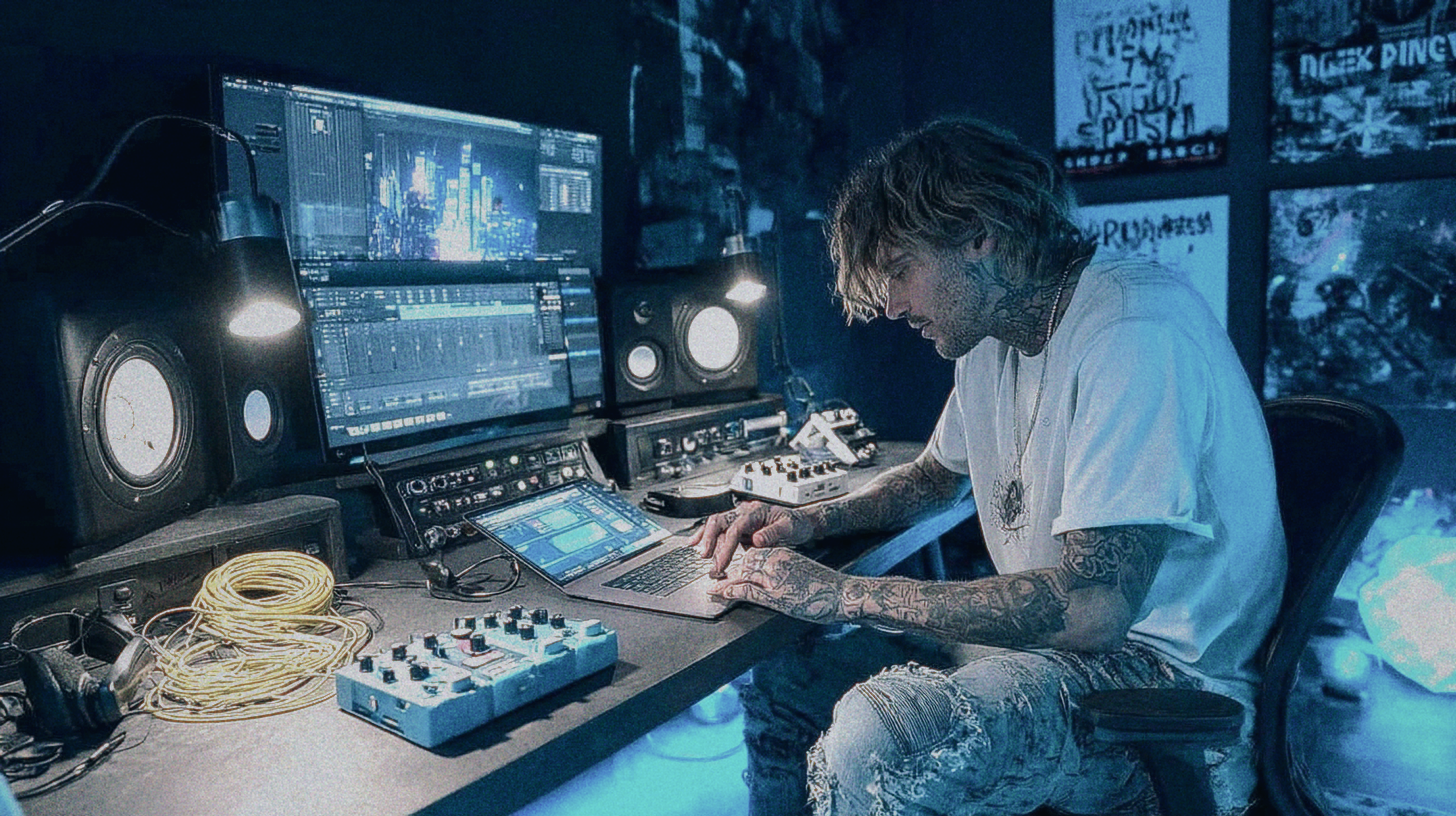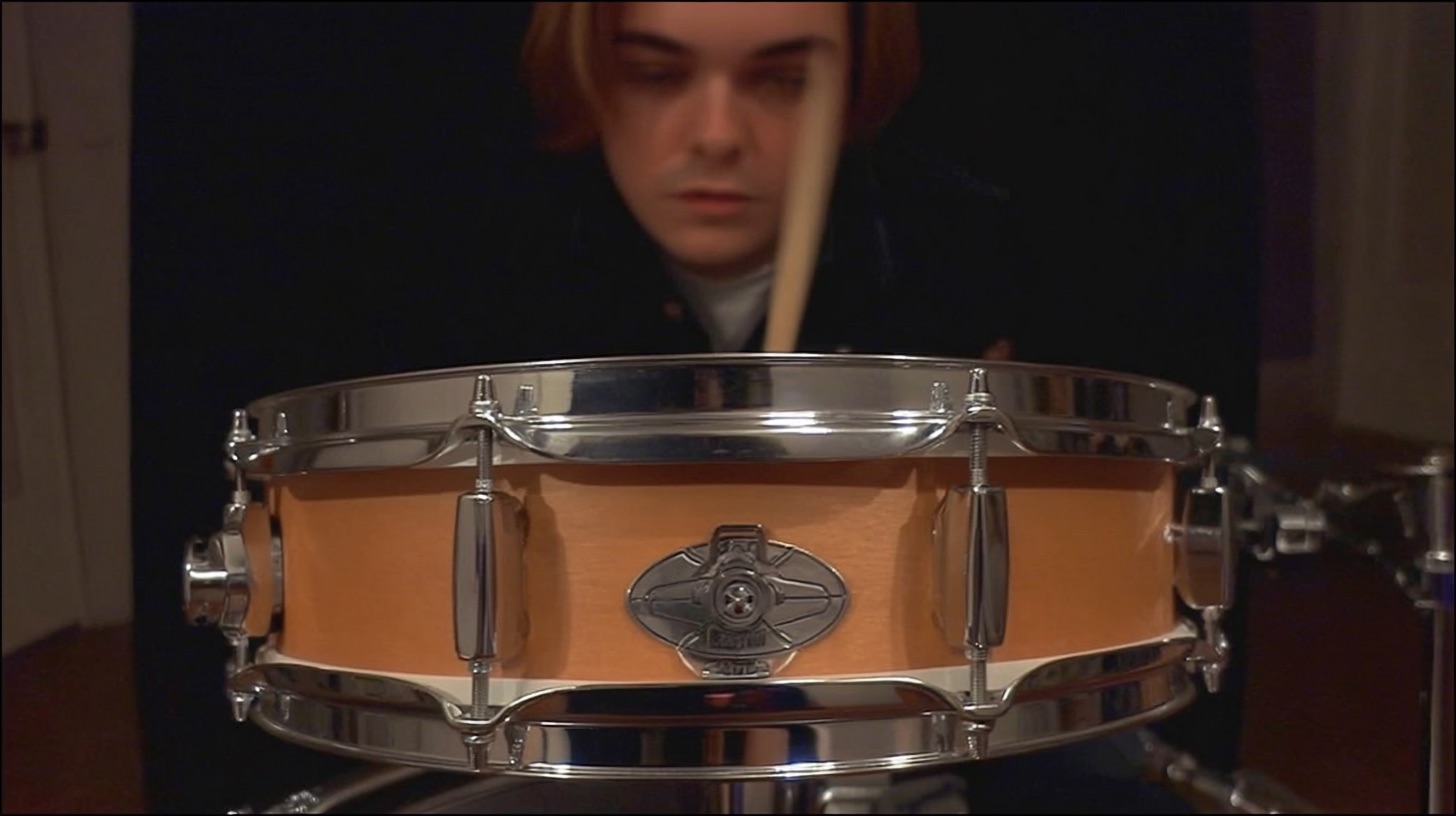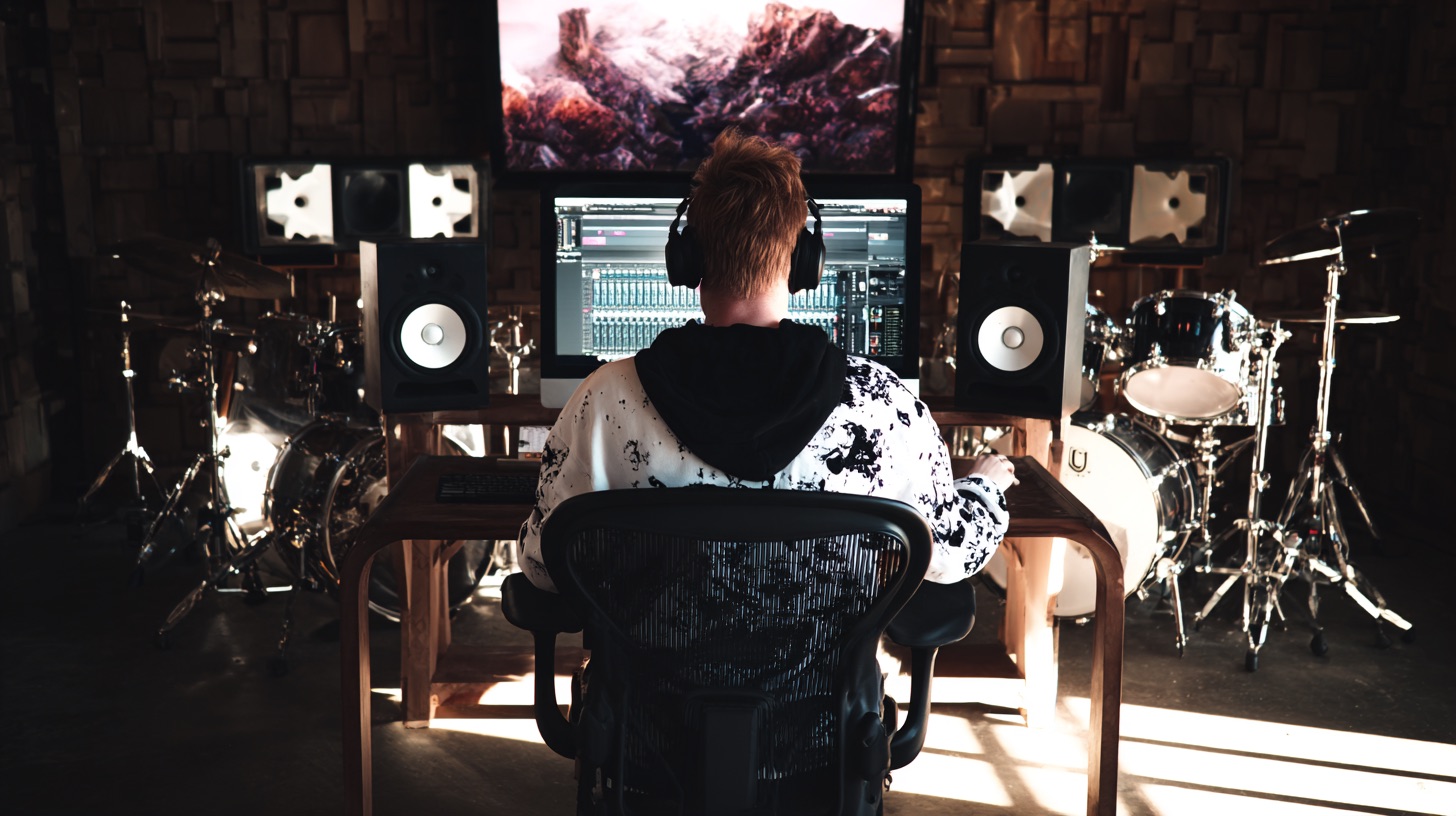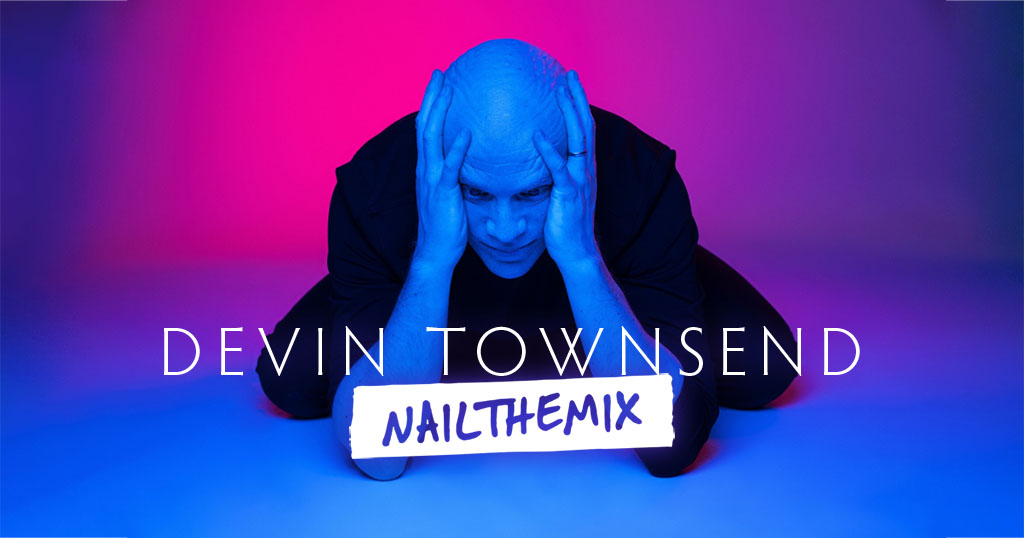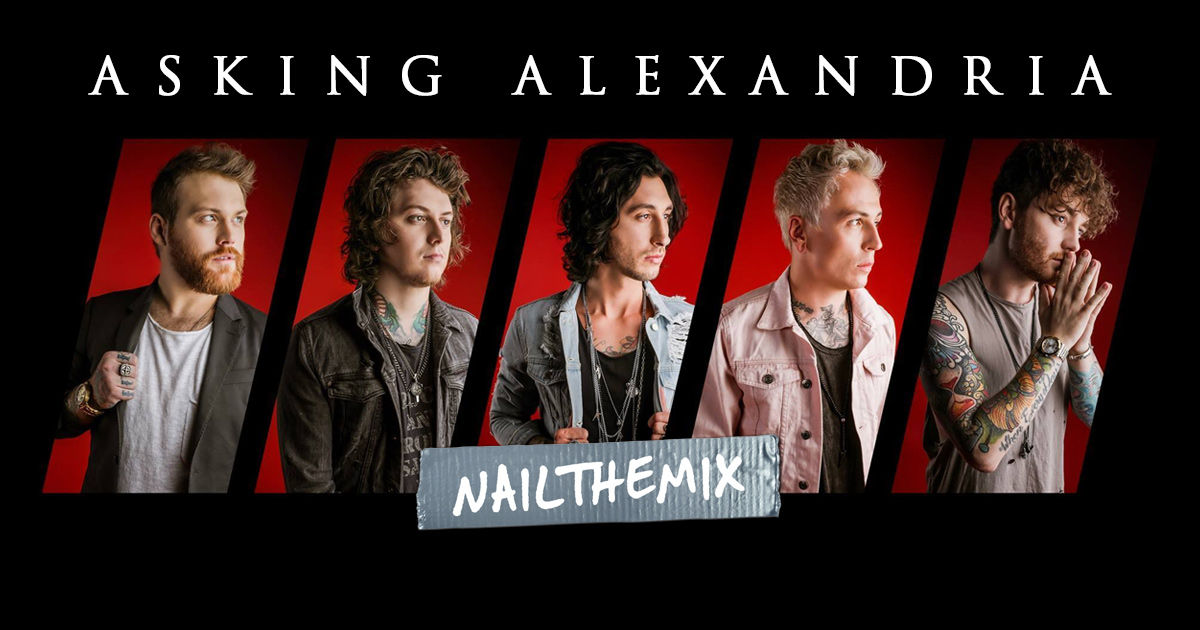
Mixing Danny Worsnop’s Raw Vocals w/ Taylor Larson
Nail The Mix Staff
Let’s be honest, getting vocals to sound massive and sit right on top of a dense, heavy metal mix is one of the biggest challenges in production. They need to be clear, aggressive, and in-your-face without sounding harsh or getting buried by a wall of guitars and drums. So how do the pros do it?
We got a behind-the-scenes look at how mixer and producer Taylor Larson tackled the vocals for Asking Alexandria, and it’s a masterclass in modern metal vocal production. It’s not about one magic plugin, but a powerful chain of smart, deliberate moves. From foundational EQ and compression to some killer bus processing tricks, let’s break down the techniques Taylor used to get that signature, upfront vocal sound.
If you want to see exactly how Taylor applies these techniques in real-time, you can watch him mix the entire song from scratch in the full Asking Alexandria session on Nail The Mix.
The Foundation: Prepping Vocals with EQ and Compression
Before you even think about wild effects, you have to build a solid foundation. For Taylor, this starts with clean-up and control.
Cleaning Up the Mud
A recurring theme in Taylor’s vocal chain is the importance of cleaning out the “mud.” This means getting rid of any unnecessary low-end rumble and cluttered low-mid frequencies. By carving out this space, you instantly create clarity and prevent the vocals from fighting with the bass and low-end of the guitars. A simple high-pass filter and a gentle dip in the low-mids is often all it takes to let the core of the vocal shine through.
This fundamental approach is a cornerstone of modern mixing. You can dive deeper into these core concepts with our in-depth guide to EQ strategies for metal.
Choosing Your Compressor: 1176 vs. LA-3A
Not all compressors are created equal, and Taylor’s approach demonstrates the importance of picking the right tool for the job. He uses different compressors to place vocals at different depths in the mix.
- For backing vocals and effects: He often reaches for an LA-3A. In his view, the LA-3A has a way of controlling a vocal and parking it “in the middle” of the mix. It doesn’t push the sound as aggressively forward as other compressors, making it perfect for elements that need to be audible and controlled but sit behind the lead vocal.
- For harmonies and upfront vocals: The classic 1176 is the go-to. To get that aggressive, present sound, he drives the vocal into the 1176. A favorite setting for harmonies is a 4:1 ratio, a medium attack (around the middle of the dial), and the fastest possible release. This combination clamps down on the peaks and adds a distinct, energetic character that helps the harmonies cut through.
This layering of different compression styles is key to creating a vocal mix with a clear sense of depth and hierarchy.
Adding Character: Saturation and Taming Harshness
With the foundation solid, it’s time to add vibe and attitude. This is where a few key plugins come in to shape the tone and give it that professional edge.
The Power of Decapitator for Screams
For screamed vocals, the Soundtoys Decapitator is an absolute weapon. Taylor demonstrates how this plugin can add incredible harmonics and bring a scream right to the forefront. The best part? It doesn’t need to be complicated. He often just throws it on and turns up the “Drive” knob until it sounds cool, proving that sometimes the simplest move is the most effective.
Pushing Vocals Forward with Rvox
Another simple but powerful tool in the chain is the Waves Renaissance Vox (Rvox). This plugin is fantastic for adding presence and a little bit of low-end “oomph.” Its one-fader design makes it incredibly easy to use—just pull the fader down to bring the vocal forward in the mix. Taylor uses it on harmonies and main vocals to give them that final push.
Taming Harshness and Adding Brightness
Sometimes you get tracks that are a bit mangled or overly harsh. Taylor has a few tricks for this:
- Tilt EQ: For a track that just needs to be leaned brighter or darker without introducing weird peaks, a Tilt EQ is a fantastic tool. It essentially pivots the entire frequency spectrum around a central point, offering a smooth and natural way to adjust the overall tonal balance.
- Soothe: When a vocal has harsh, resonant frequencies that are painful to the ear, a dynamic resonance suppressor like oeksound Soothe is, as Taylor puts it, “life-changing.” It automatically finds and turns down those nasty frequencies without destroying the overall tone, saving you tons of time you’d otherwise spend hunting with a narrow EQ band.
Rounding Out the Tone with Tape Emulation
To give the vocals weight and a smoother, bigger feel, Taylor uses the Crane Song Phoenix II tape emulation plugin. By using dark settings like “Dark Essence” and “Opal,” he can add a round, chesty quality to the low-mids that makes the vocal feel huge. For lead vocals, he might switch to a brighter “Luster” setting to add presence while still getting that tape saturation goodness.
Making it Wide: Stereo Effects and Ambiance
A great vocal sound isn’t just about the dry tone; it’s also about the space it lives in. But you have to be careful not to wash it out.
Wide Delays for a Clear Center
One of the biggest rules for Taylor’s vocal effects is to keep the center channel as dry as possible. He uses stereo delays, like the Soundtoys Echo Boy, and makes sure they are panned wide. By finding delay patterns that are different on the left and right sides, he creates a wide, immersive stereo field that leaves the middle open for the main vocal to command attention.
The Pre-Delay Trick for Upfront Reverb
Want reverb without pushing your vocal to the back of the room? The pre-delay knob is your best friend. By turning up the pre-delay on a reverb, you create a small gap of silence between the dry vocal and the start of the reverb tail. This simple move achieves the best of both worlds: the vocal stays right up in the listener’s face, but you still get the size and ambiance of the reverb.
The Secret Weapon: Aggressive Vocal Bus Processing
Here’s where it all comes together. Instead of just sending his vocals to the master bus, Taylor routes all vocal tracks—leads, doubles, harmonies, and all their effects—to one “wacky, crazy” vocal bus. This allows him to process everything together for ultimate cohesion and impact.
Gluing It All Together with the API 2500
The first thing on this bus is an API 2500 bus compressor. He notes this isn’t his normal move, but for this mix, it was the perfect way to pull all the disparate vocal elements together and push them to the front. The compressor acts as the “glue,” making the dozens of vocal tracks feel like one massive, singular performance.
Final Polish with Bus EQ and Saturation
After the compressor, the entire vocal bus gets some final shaping. This includes adding an 18k shelf with an EQ to give all the vocals a touch of “air” and presence. The Crane Song Phoenix II also makes another appearance here, adding its characteristic size and warmth to the entire vocal performance at once.
He even mentions running the bus a little hot into clipping. While not conventional wisdom, it follows his ultimate rule: if it works and it sounds good, then it is good.

100+ Insanely Detailed Mixing Tutorials
We leave absolutely nothing out, showing you every single step
Build Your Own Massive Vocal Sound
Taylor Larson’s approach to mixing Asking Alexandria’s vocals is a powerful combination of solid fundamentals and creative, aggressive processing. By cleaning the mud, choosing the right tools, and using a powerful vocal bus chain, you can make your vocals demand attention in any dense metal mix.
Asking Alexandria on Nail The Mix
Taylor Larson mixes "Into The Fire"
Get the Session
These techniques are incredible starting points, but watching a pro like Taylor actually dial them in is a game-changer. At Nail The Mix, you don’t just get the theory; you get to be a fly on the wall for the entire process. See every plugin, every fader move, and every decision that goes into crafting a world-class mix. If you’re ready to move beyond presets and truly unlock your sound, check out the full Asking Alexandria mixing session and see how it’s done.
Get a new set of multi-tracks every month from a world-class artist, a livestream with the producer who mixed it, 100+ tutorials, our exclusive plugins and more
Get Started for $1